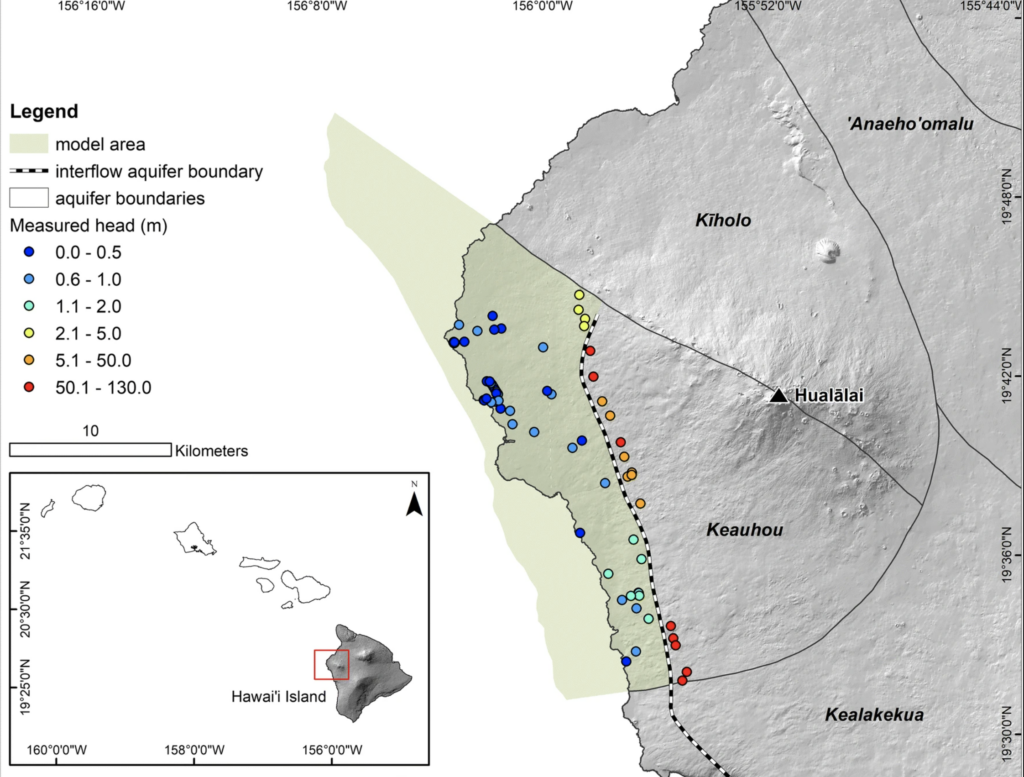Fresh groundwater is a critical resource supporting coastal ecosystems that rely on low-salinity, nutrient-rich groundwater discharge. This resource, however, is subject to contamination from point- and nonpoint-sources such as on-site sewage disposal systems (OSDS) and urban developments. Thus, the significance of flow and transport processes near the coastline due to density effects and water circulation in a complex hydrogeologic system was investigated. A three-dimensional, density-dependent groundwater model was developed for the Keauhou basal aquifer (Hawai‘i Island, USA), where hydraulic head, salinity, nutrient concentrations, and submarine spring flux rates were used as calibration variables to best constrain parameters and produce a comprehensive aquifer management tool. The model was applied to assess relative contaminant source contributions, and to evaluate aquifer response concerning water levels and quality due to changing environmental conditions.
